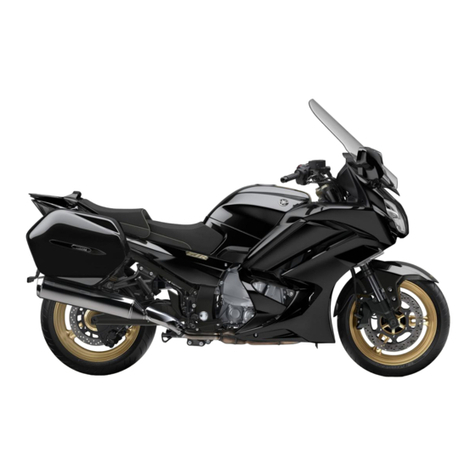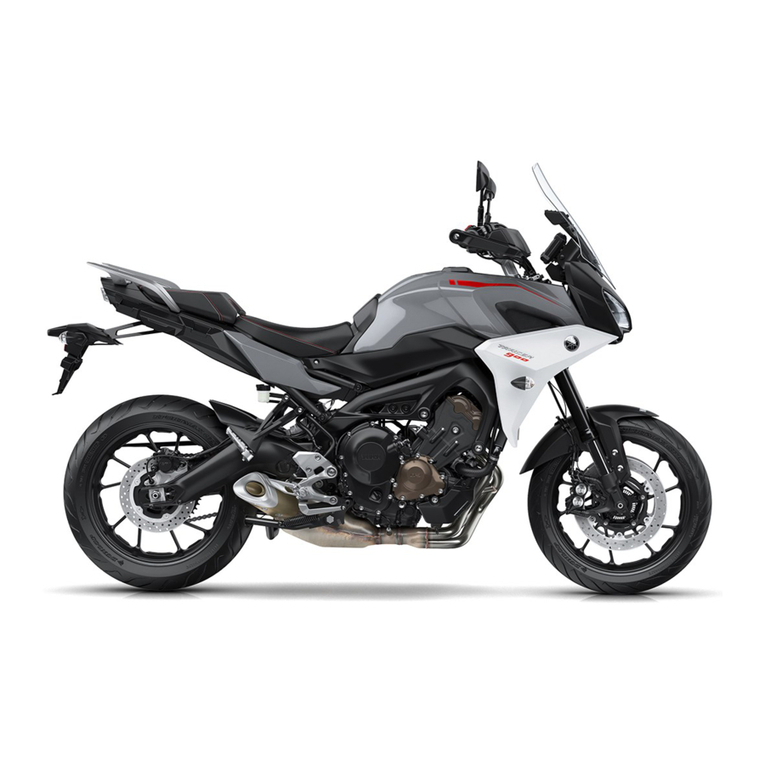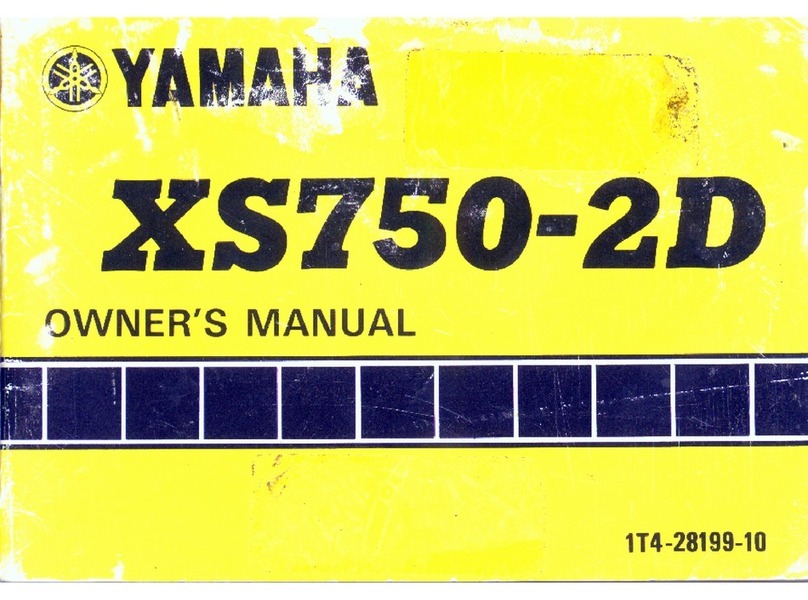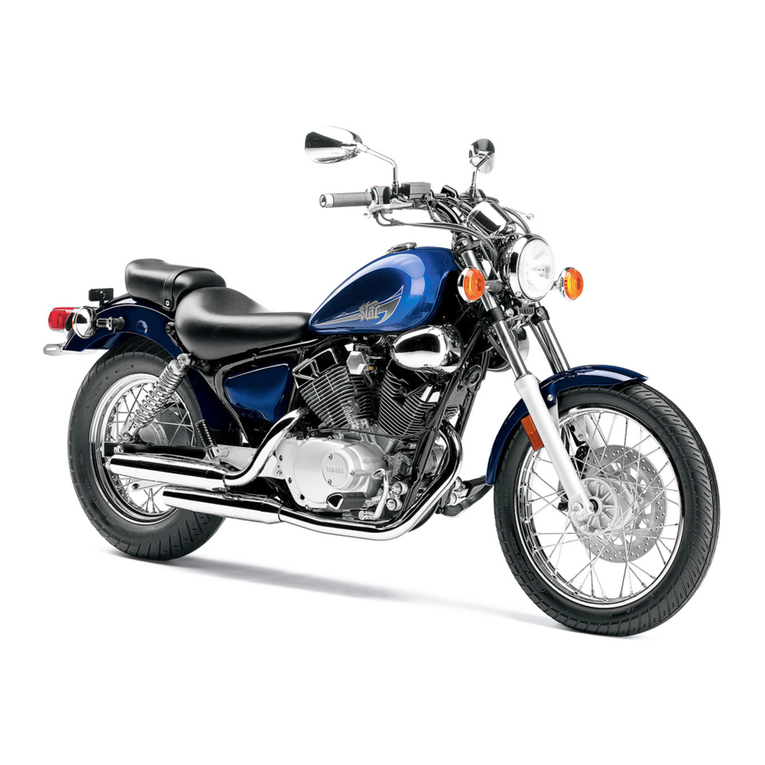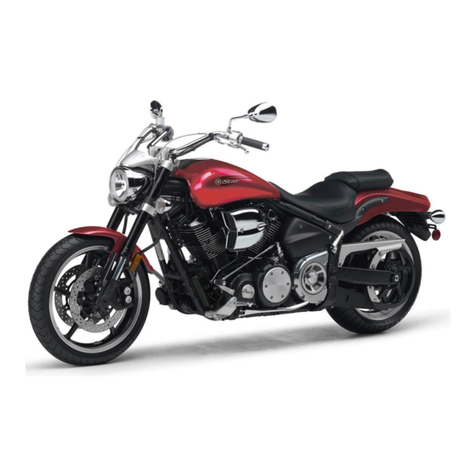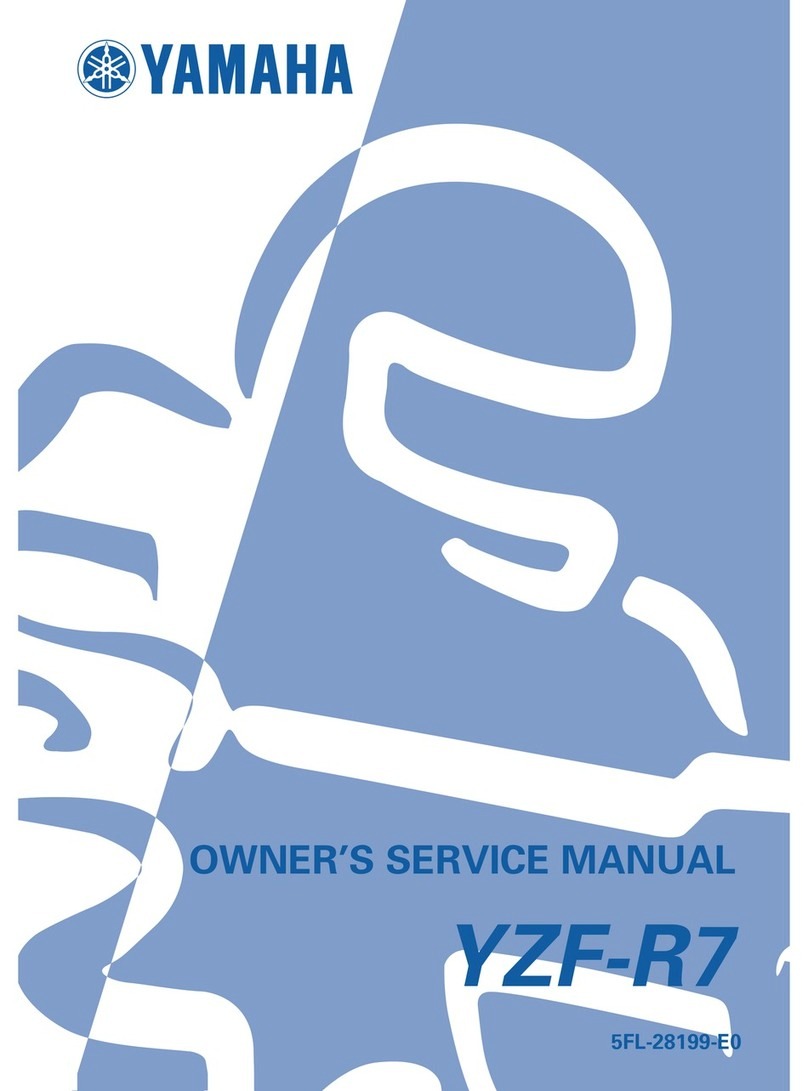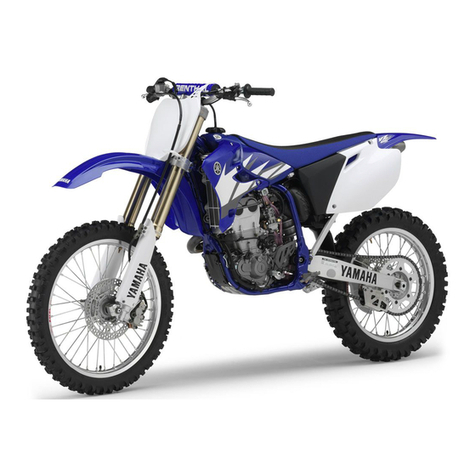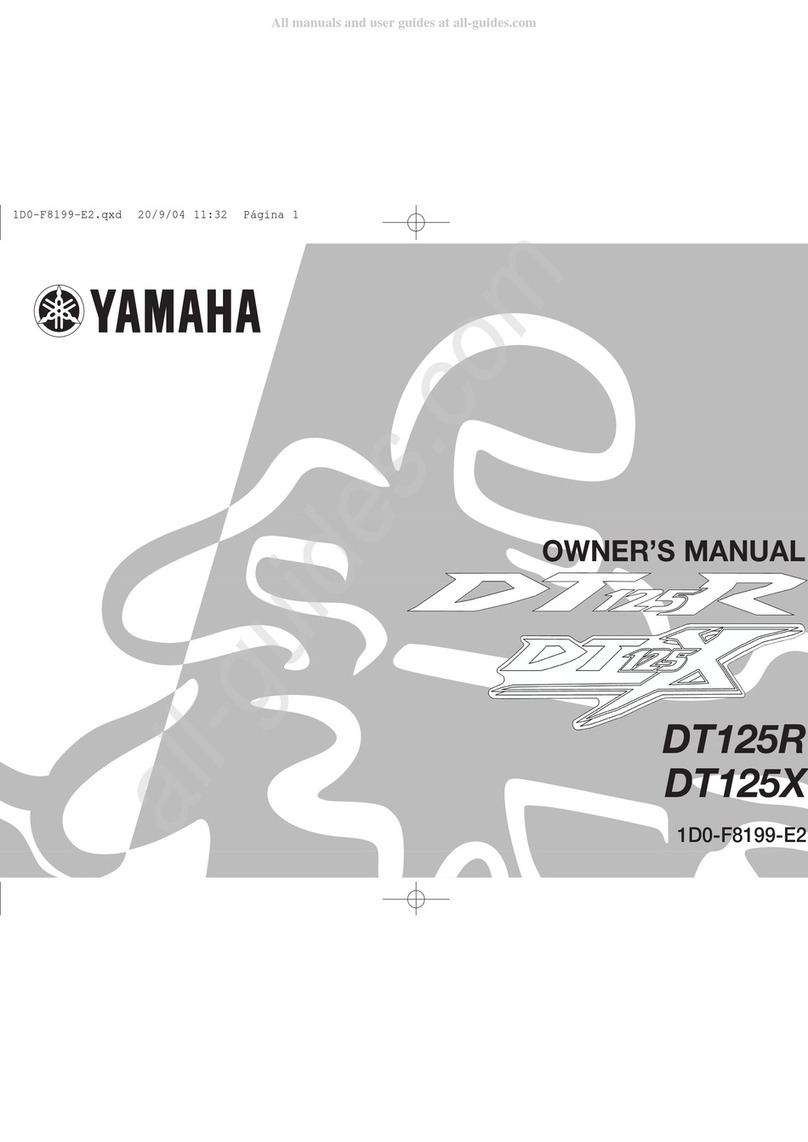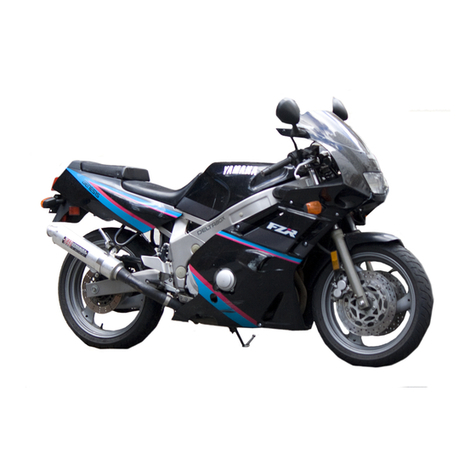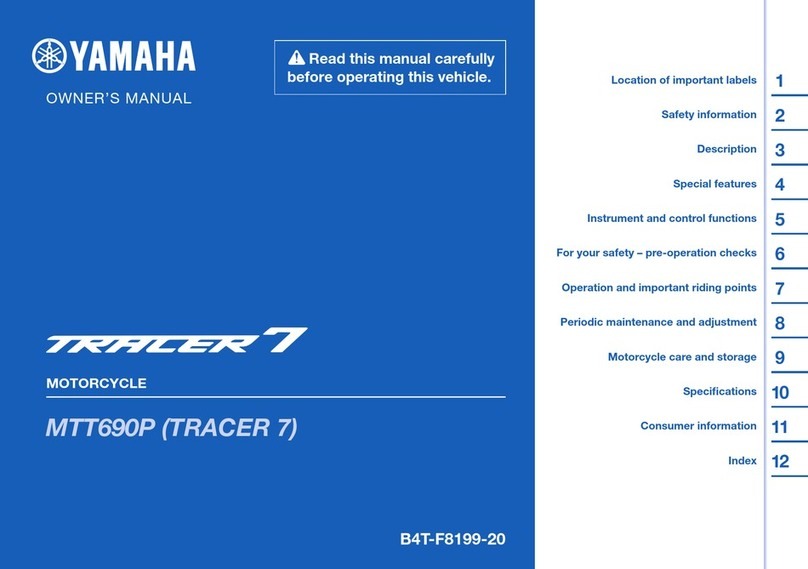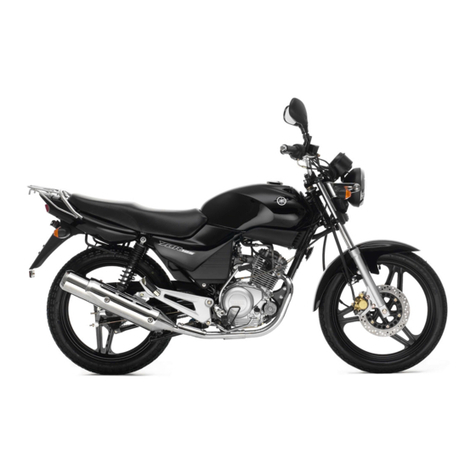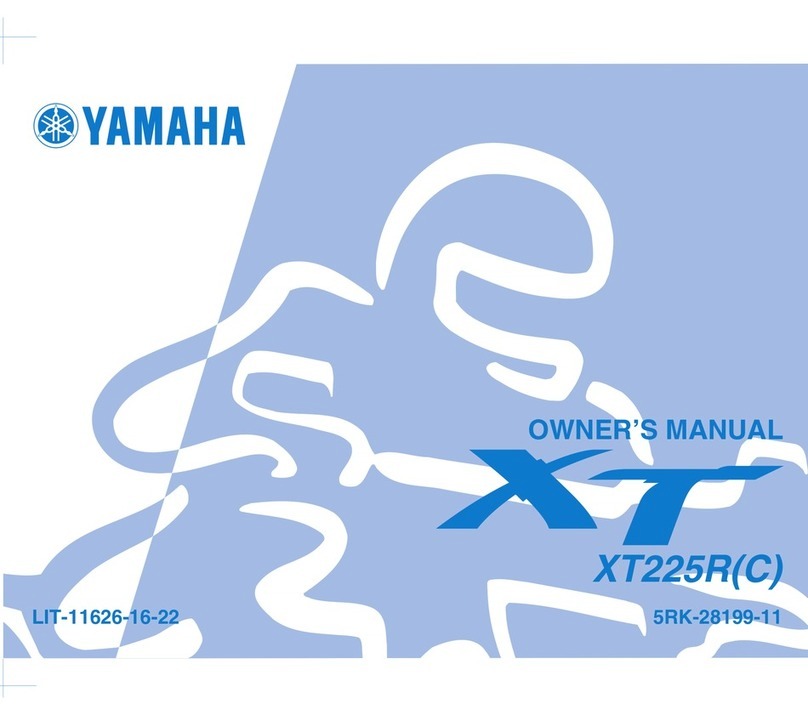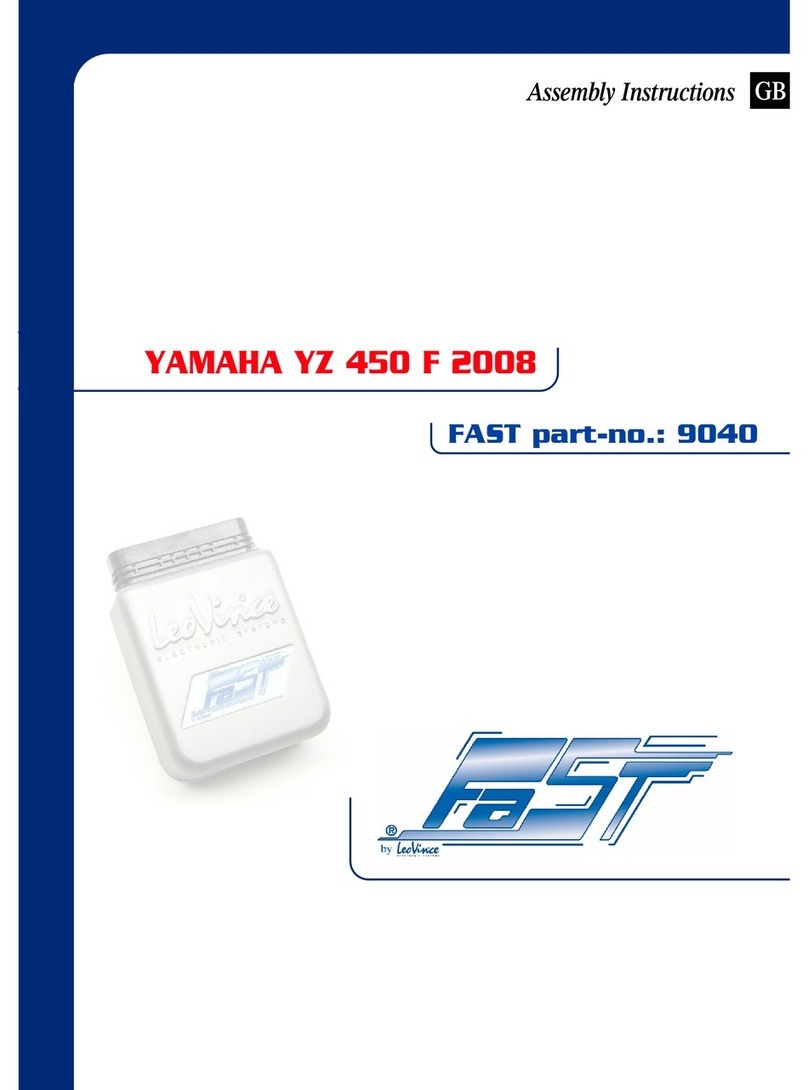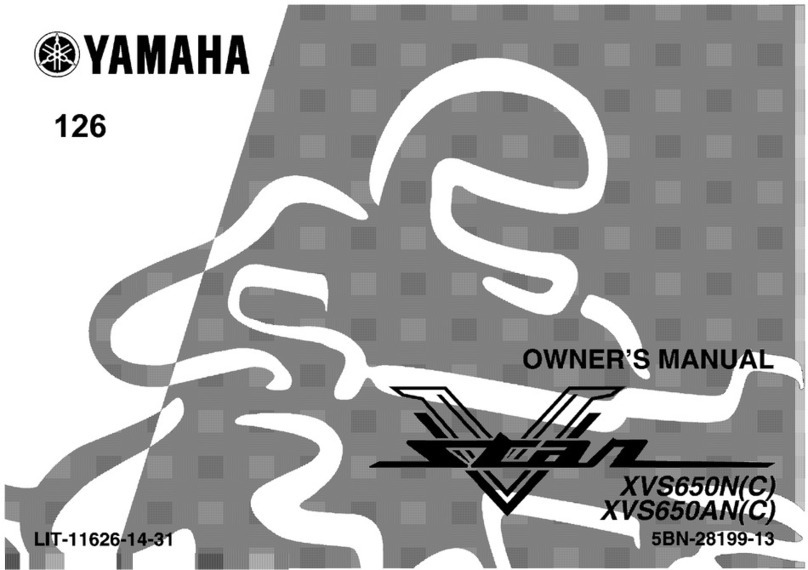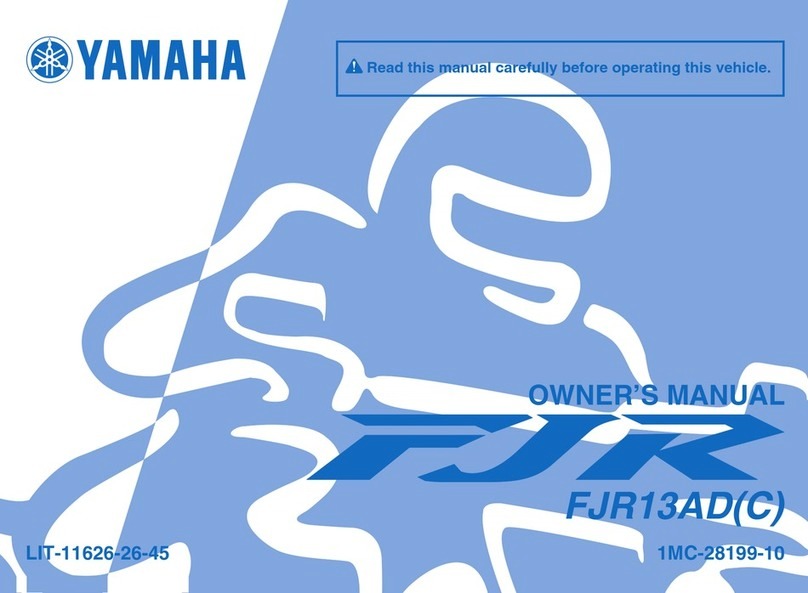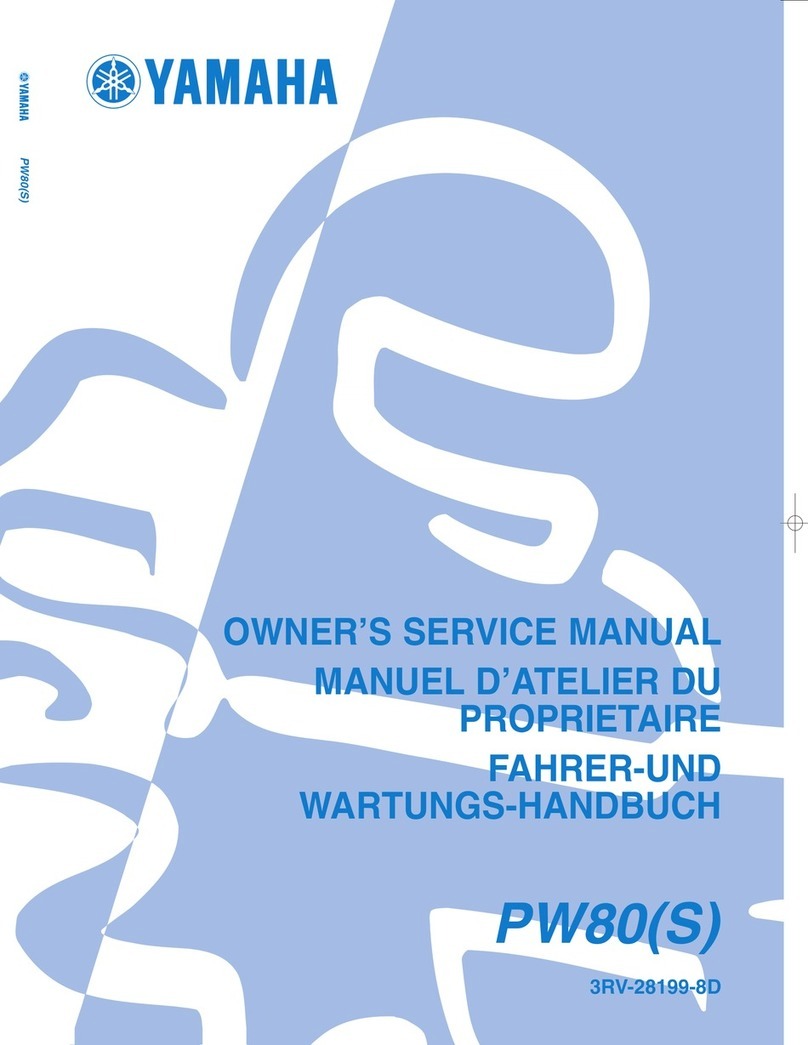
TABLE OF CONTENTS
SAFETY INFORMATION ..................1-1
Location of important labels ............1-5
DESCRIPTION ..................................2-1
Left view ..........................................2-1
Right view ........................................2-2
Controls and instruments.................2-3
INSTRUMENT AND CONTROL
FUNCTIONS .......................................3-1
Immobilizer system .........................3-1
Main switch/steering lock ................3-2
Indicator and warning lights ............3-3
Multi-function display ......................3-5
Handlebar switches ........................3-7
Clutch lever .....................................3-8
Shift pedal .......................................3-9
Brake lever .....................................3-9
Brake pedal ....................................3-9
Fuel tank cap ................................3-10
Fuel ...............................................3-10
Catalytic converter ........................3-11
Seat ..............................................3-12
Storage compartment ...................3-12
Adjusting the shock absorber
assembly ...................................3-13
Sidestand ......................................3-14
Ignition circuit cut-off system ........3-15
PRE-OPERATION CHECKS..............4-1
Pre-operation check list ..................4-2
OPERATION AND IMPORTANT
RIDING POINTS................................. 5-1
Starting and warming up a cold
engine ......................................... 5-1
Shifting ........................................... 5-2
Tips for reducing fuel
consumption ............................... 5-3
Engine break-in .............................. 5-3
Parking ........................................... 5-4
PERIODIC MAINTENANCE AND
MINOR REPAIR ................................. 6-1
Owner’s tool kit ............................... 6-1
Periodic maintenance and
lubrication chart .......................... 6-2
Removing and installing cowlings
and panels .................................. 6-5
Checking the spark plug .................6-7
Engine oil and oil filter element ...... 6-9
Coolant ......................................... 6-12
Replacing the air filter element and
cleaning the check hose ........... 6-15
Adjusting the engine idling
speed ........................................ 6-16
Adjusting the throttle cable free
play ........................................... 6-17
Tires ............................................. 6-17
Spoke wheels ............................... 6-19
Adjusting the clutch lever free
play ........................................... 6-20
Adjusting the rear brake light
switch ....................................... 6-21
Checking the front and rear
brake pads ................................ 6-21
Checking the brake fluid level ...... 6-22
Drive chain slack .......................... 6-23
Lubricating the drive chain ........... 6-24
Checking and lubricating the
cables ....................................... 6-25
Checking and lubricating the
throttle grip and cable ............... 6-25
Checking and lubricating the
brake and clutch levers ............ 6-25
Lubricating the brake pedal ......... 6-26
Checking and lubricating the
sidestand .................................. 6-26
Checking the front fork ................. 6-27
Checking the steering .................. 6-27
Checking the wheel bearings ....... 6-28
Battery ......................................... 6-28
Replacing the fuses ..................... 6-30
Replacing the headlight bulb ....... 6-31
Replacing a turn signal light bulb
or the tail/brake light bulb ......... 6-32
Replacing an auxiliary light
bulb ........................................... 6-33
Supporting the motorcycle ........... 6-33
Front wheel .................................. 6-34
Rear wheel ................................... 6-35
Troubleshooting ........................... 6-37
Troubleshooting charts ................ 6-38
ProCarManuals.com
